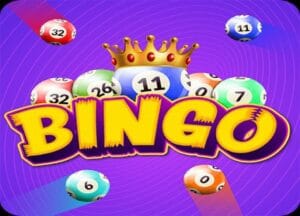Key Takeaways
- Discover the impact of catalogs as marketing tools in the digital age.
- Learn about various design elements that enhance catalog effectiveness.
- Understand how catalogs can be integrated seamlessly with digital marketing strategies.
Introduction to Catalogs as Marketing Tools
In today’s fast-paced digital world, the persistence of the print catalog underscores its unique value within marketing strategies. While digital media is undeniably vast and effective, catalogs bring a human touch that digital cannot emulate. Flipping over glossy pages offers a holistic experience that is unique in the midst of digital noise. Research by the United States Postal Service indicates that people still respond strongly to physical mail and print media, recognizing its essential role in comprehensive marketing strategies.
Crafting a Memorable Catalog Design
A memorable catalog design is an art as much as it is a science. It requires a nuanced understanding of how images, text, and themes come together to paint a broader narrative about your brand. This approach is about more than just showcasing products—it’s about weaving a story that resonates on an emotional level. When done correctly, a catalog can transform passive browsing into an active, engaging experience that leaves a lasting impression on the reader.
The Importance of Content in Catalogs
The value of a catalog lies not just in showcasing products but in how these products are presented through words. Every piece of content, from product descriptions to promotional messages, carries weight. Content should transcend mere description and offer value, answering potential questions and addressing pain points. According to Statista, quality content bolsters consumer trust and can significantly enhance user experience by aligning with their needs and expectations. Because content is integral, ensuring it’s informative, interesting, and aligned with your brand message is crucial for building a connection with your audience.
Visual Elements That Captivate
Images can transcend language barriers and deliver messages at lightning speed, which makes them a vital component of any catalog. They tell your brand story with a visual impact that words alone cannot achieve. Professional photography, paired with creative page layouts and color schemes, can convey emotions and evoke desires, guiding the reader on an intuitive journey through the catalog. Thoughtfully curated visuals should engage the reader from the first glance, appealing to the sensorial aspects that make print media enduringly effective.
Printing Techniques for a Professional Finish
The final quality of a catalog depends heavily on the printing techniques employed. Selecting the right paper stock can influence the reader’s perception of your brand’s quality. Specialized finishes, such as matte or glossy, add depth and sophistication, while advanced techniques like foil stamping, die-cutting, and embossing can offer the catalog a luxurious feel. These finishing touches enhance the visual appeal and create a memorable tactile experience, compelling the reader to linger on each page longer.
Bridging Catalog and Digital Marketing
In a world where digital integration is key, bridging the gap between print and online platforms is more crucial than ever. Incorporating elements such as QR codes or near-field communication (NFC) technology can provide an interactive element to catalogs, guiding readers toward a seamless digital journey. Incorporating these technologies effectively enhances customer engagement by offering additional layers of information and options, such as direct links to online shopping platforms or exclusive digital content access, thus blending the best experiences of both worlds.
Real-Life Success Stories
Several brands have successfully leveraged catalogs as a powerful tool in their marketing arsenal. Take, for example, companies that have revamped their catalog design to better align with their customers’ evolving tastes, leading to increased sales and enhanced brand loyalty. These success stories highlight the catalytic role catalogs can play when they reflect customer needs and desires through exquisite design and engaging content. Such examples serve as a testament to the enduring potential and adaptive capabilities of catalogs in reaching diverse audiences.
Future Trends in Catalog Marketing
As we look to the future, several trends are set to shape the landscape of catalog marketing. Sustainable printing and eco-friendly materials are becoming increasingly important as consumers and brands both prioritize environmental consciousness. Additionally, personalization powered by data and insights is revolutionizing catalog marketing, allowing brands to deliver tailored experiences that resonate more closely with individual consumers. Staying informed of these trends and proactively incorporating them can ensure that your catalog remains a relevant and powerful marketing tool in a rapidly evolving market.
Conclusion
In conclusion, the art of catalog design remains a vital component of effective marketing strategies, even in an increasingly digital world. By blending tactile experiences with innovative visual storytelling, catalogs can evoke emotional connections that digital platforms often struggle to replicate. As demonstrated by various successful brands, the thoughtful integration of design elements, engaging content, and high-quality printing techniques not only enhances the catalog’s aesthetic appeal but also strengthens its ability to resonate with audiences. This enduring relevance is underscored by the ongoing preference for print media, showcasing its unique position in fostering customer engagement and loyalty.
Looking ahead, the future of catalog marketing is poised for exciting developments driven by trends such as sustainability and personalization. Brands that embrace eco-friendly practices and leverage data-driven insights will find themselves better equipped to meet evolving consumer expectations. By continuously adapting to these trends, marketers can ensure their catalogs remain not only relevant but also indispensable tools in their overall marketing strategies. Ultimately, a well-crafted catalog has the power to bridge the gap between print and digital realms, creating a harmonious customer journey that captivates and converts.








